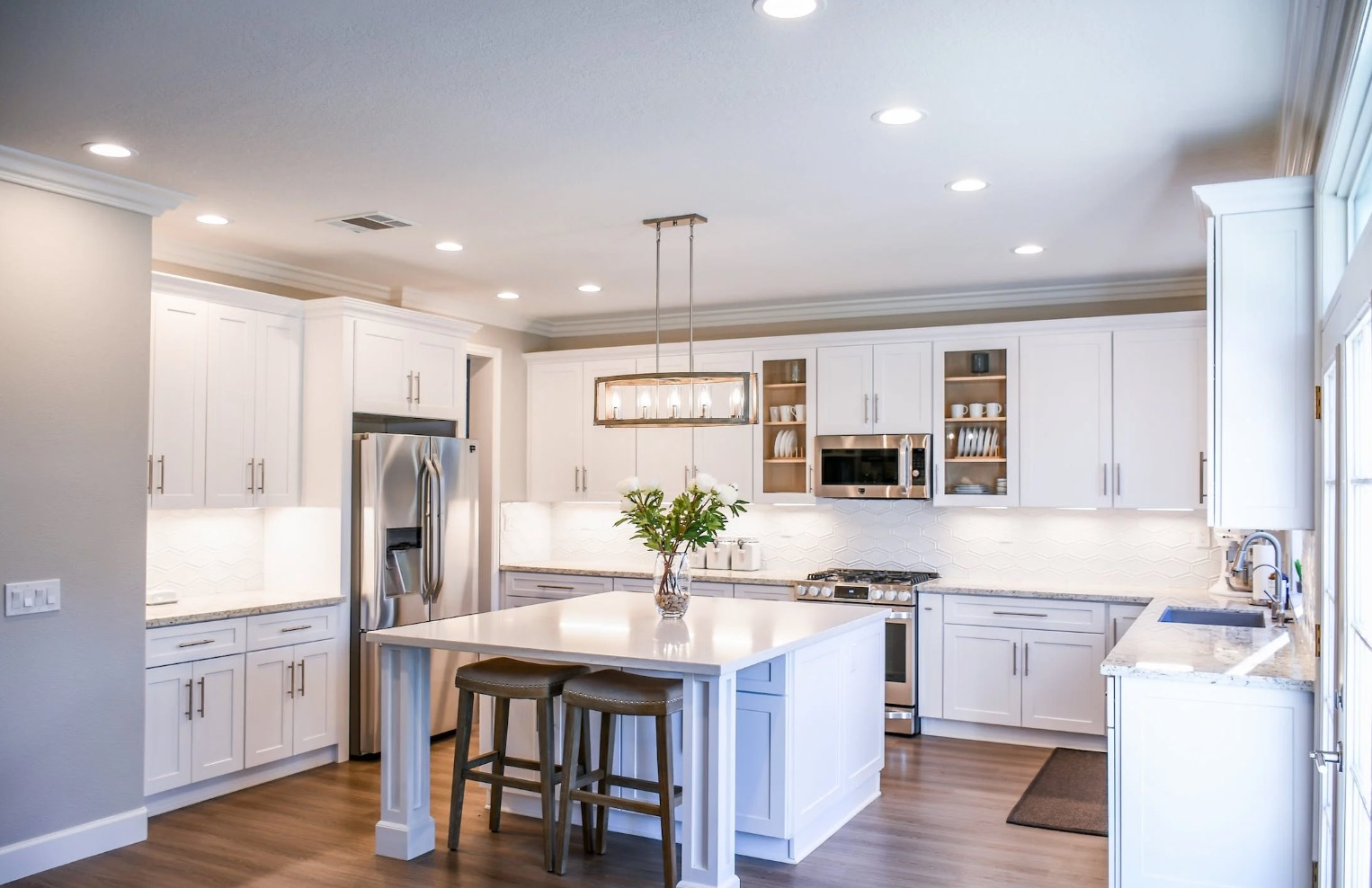
19 Sep 4 Critical Tips on How to Recover Your Water-Damaged Floor
Although no one wants to have a floor that is water damaged, there are many situations where it cannot be fixed. Even waterproofed floors can become porous over time due to invisible leaks, humidity, or seeping groundwater.
Here’s what to do if you suspect water damage on your floor:
Watch out for signs of moisture damage
You should inspect your floor for damage if you have experienced flooding, water leaks, or any other type of water event. Hardwood floors are the easiest to identify. Wooden floors can show buckling, peaking, cupping , and discoloration.
There are many signs that indicate damage to different floor types
Hardwood Floors
Cupping is the most obvious sign of hardwood floor moisture. Cupping is when the edges of boards curl upwards, leaving the middle with a slight dip. You can also:
- Crowning is when the center of the tree rises above the edges
- Discoloration
- Dark spots (mold, mildew)
- Buckling (or when the wood planks separate from the subfloor, foundation for a floor below it)
Laminate Flooring
Laminate floors are not tolerant to moisture. Laminate floors are more durable than vinyl flooring and hardwood floors, but they can be damaged by moisture or water.
Here are some common indicators that laminate floors may be at risk of water damage
- Cupping
- Separation, swelling, and warping
- Splitting, cracking
- Mold
Tile Flooring
Particularly tiles that are constantly wet (ex. Over time, bathroom tiles can also be damaged. Water can get into grout cracks and cause damage to the subfloor underneath the tiles. This can cause tiles to move or detach from subfloor. These are signs of tile floor damage:
- Loose, moving tiles
- Cracked grout and/or discolored grout
- When tapped, hollow sounds are produced
- Stains
- Mold and pests (ex. Termites, ants)
- Musty odor
Vinyl Flooring
Vinyl flooring is waterproof, but can still be damaged by flooding or extreme moisture. Vinyl floors that have been damaged by water may look like this:
- Discolored (and/or mouldy)
- Bulgy
- Warped
- Buckle
Repair the Leaks
To prevent your floor from becoming waterlogged again, it is important to eliminate the source of moisture before you make repairs. You can get excess moisture from:
- Water quality (rain and leaks)
- Gray water (waste from appliances, clean toilets).
- Black water (contaminated water, ex. sewage)
- Groundwater
Water leaks can be cleaned easily and you can do it yourself with basic plumbing knowledge.
However, contaminated water leaks require extra care. Experts (ex. To fix the leaks safely, you can hire experts (ex.
Prepare the floor for repair/replacement
It is best to hire professionals for both cleanup and repair. You can do it yourself.
Step 1. You can also use a sponge/squeegee to remove the water, but make sure you wear rubber gloves.
Step 2. Clean the floor. Use your favorite detergent mixed with mild disinfectant. Use a stiff brush to scrub the entire floor. Clean the entire floor with the solution. Trisodium phosphate can be used to treat moldy areas.
Step 3. Allow it to dry. Let the floor dry naturally. To maximize airflow, open the doors and windows.
Do the necessary repairs
It is up to you to decide whether to repair or replace a water-damaged floor. Floors with obvious and severe damage need to be repaired.
Here are some tips to help you recover different types of water-damaged floors
Hardwood
Screw or nail the boards that look slightly lifted into place. However, you must remove any water-damaged floor plansks. Use a saw to cut the floor planks that are damaged. Use a pry bar to lift the section that is damaged.
Next, attach the boards to the floor. Sand the old boards and the new ones before staining. Use a polyurethane finish and stain to protect the wood floors.
Laminate
Laminate boards that have been damaged by water show signs of swelling, separation and disintegration. You can replace damaged boards by yourself in this instance. In the event of severe water damage (ex. Flood damage, however, is a common option.
Vinyl
Before you attempt to replace or fix buckling on vinyl flooring, make sure it is dry.
Use a screwdriver to remove the damaged vinyl. The vinyl can be repaired or used again.
Tiles
Subfloors that have been water damaged expand, causing tiles to crack or fall from the subfloor. To remove ceramic tiles from the subfloor, lift the tiles off the floor and pull them off.
After cleaning the tiles, you can reuse them (as long as they aren’t cracked or broken). For a reinstallation, use the same grout. Expert help is needed if you want to ensure that the installation is watertight.
Do it yourself or hire a professional to repair/replace?
Depending on how severe the water damage is, you have two options: either hire general contractor to fix them or you can do it yourself.
You can save money if you have the time and the issues are minor. For the best results, however, it is better to call in the professionals if the floor has been exposed to water for a long time or if mold growth or decay is visible.

